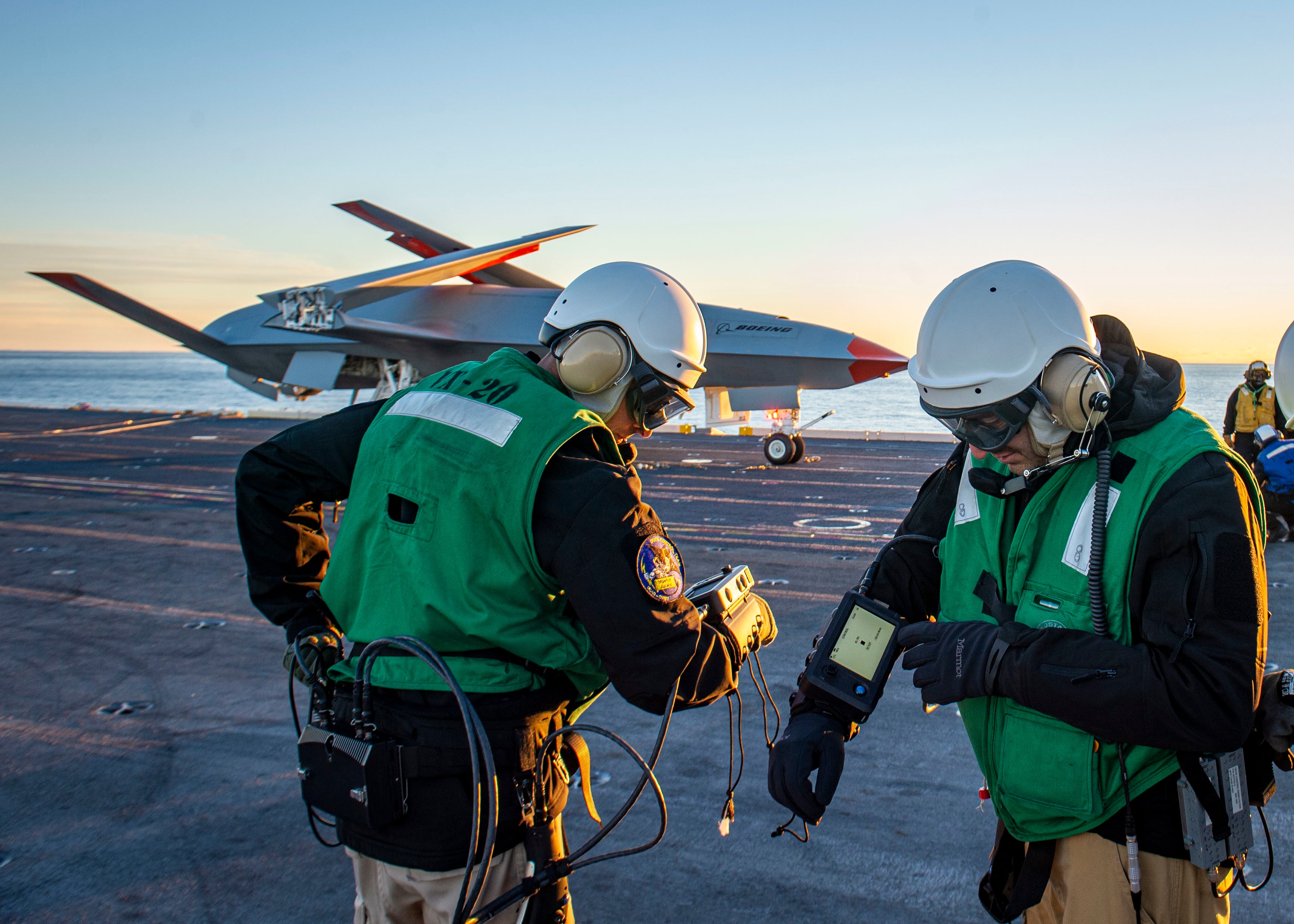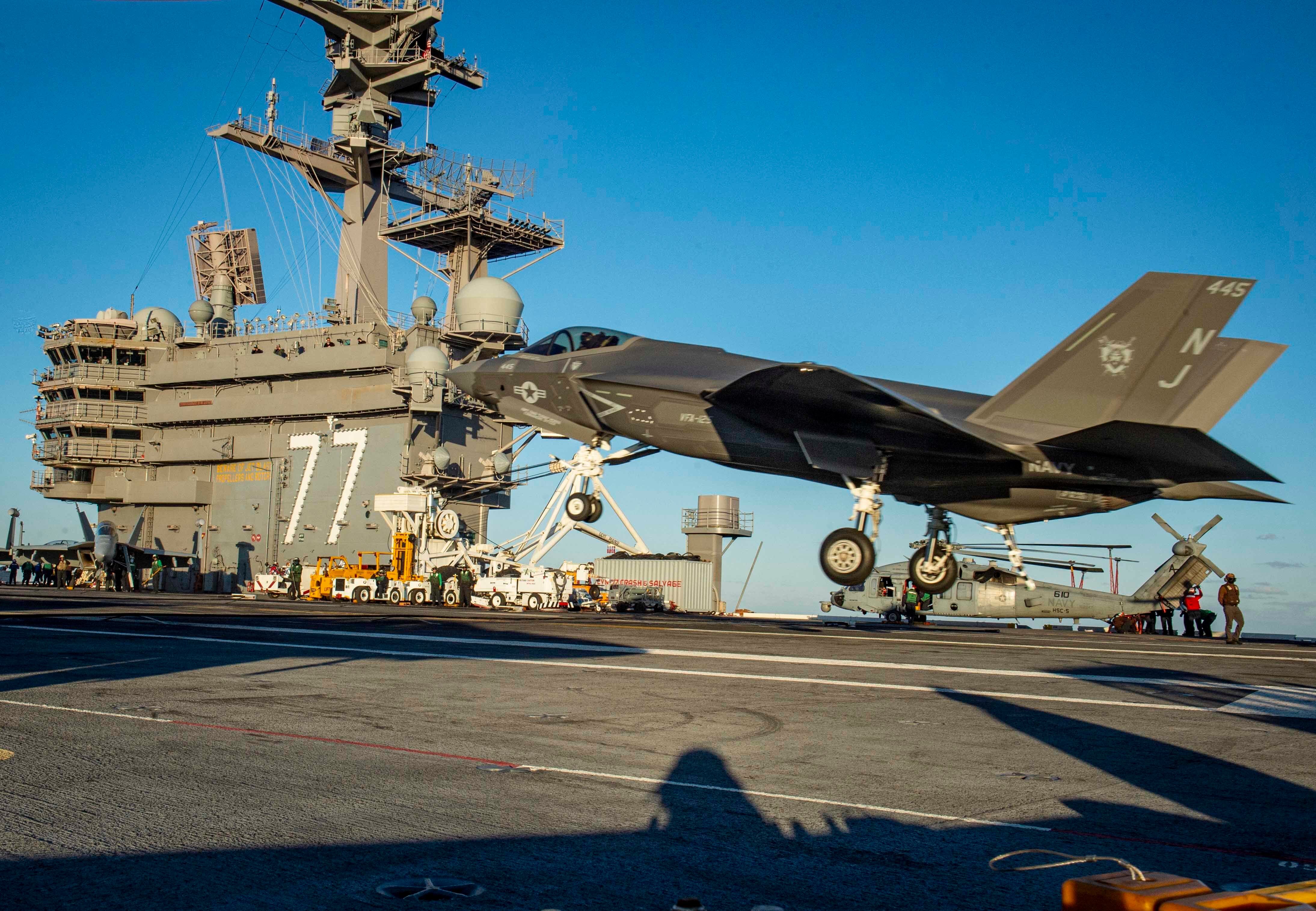WASHINGTON — The aircraft carrier George H.W. Bush has spent the past two weeks showing off the future of naval aviation, hosting the U.S. Navy’s first MQ-25A Stingray unmanned tanker for an at-sea demonstration and conducting that carrier’s first F-35C Joint Strike Fighter flight operations.
The service announced Dec. 20 it had completed an unmanned carrier aviation demonstration, installing a ground control station on the ship and proving the UAV could integrate into that carrier environment: on a pitching flight deck, with the operator following the hand signals of the aircraft handlers, and with ship-based operators maintaining connectivity even while the drone is midair and away from the carrier.
For the demonstration, a prototype MD-5 ground control station was installed in what is being called an Unmanned Aviation Warfare Center, a first-of-its-kind control room that would be set up on carriers to support MQ-25 operations, according to a news release. The team in this control room would coordinate the drone’s missions as well as its approaches to the ship during landing.

The Boeing-owned T1 test vehicle then conducted day and night operations at sea, including taxiing and parking on the flight deck, connecting to the catapult, and clearing out of the landing area.
In addition to the team in the control room, MQ-25 “deck operators” used Boeing’s handheld Deck Control Device during these maneuvers, working alongside Navy taxi directors and converting the sailors’ directions into corresponding inputs for the MQ-25.
“Early testing allowed our team the opportunity to evaluate many new systems for the first time at sea with T1,” Capt. Chad Reed, unmanned carrier aviation program manager, said in the Navy news release. “Our initial look at taxi operations on the flight deck successfully demonstrated the MQ-25′s ability to maneuver just like a manned aircraft in the shipboard environment.”
Though T1 did not take off or land on the ship yet, a surrogate aircraft was used to test the hardware and software associated with the Joint Precision Landing System installed on aircraft carriers and amphibious assault ships to guide F-35Cs and F-35Bs for safe landings. The system will be integrated into the MQ-25 as well as Navy and Marine Corps variants of the V-22 Osprey.
“There is no better way to determine the success of a carrier aircraft design and its integration into the air wing then to put that new aircraft through testing at sea,” Reed said in the news release. “It’s an exciting time as we progress toward the air wing of the future.”
MQ-25 will conduct aerial refueling for other aircraft in this air wing of the future, including the F/A-18E-F Super Hornet, the F-35C, the E-2D Advanced Hawkeye and the EA-18G Growler. The first of that “air wing of the future” configuration, minus the MQ-25, is on deployment now aboard carrier Carl Vinson in the Pacific.

While several other carriers have operated the F-35 by now, the Bush has not. It spent 30 months in a deep maintenance period at Norfolk Naval Shipyard in Virginia, leaving the yard in late August and conducting a range of trials and fleet activities since.
On Dec. 12, those activities included hosting carrier qualifications for Strike Fighter Squadron 125 — the F-35C fleet replacement squadron that trains up new Joint Strike Fighter pilots — giving the ship’s crew members a first look up close at the jet and the capability it will bring to their air wing.
Megan Eckstein is the naval warfare reporter at Defense News. She has covered military news since 2009, with a focus on U.S. Navy and Marine Corps operations, acquisition programs and budgets. She has reported from four geographic fleets and is happiest when she’s filing stories from a ship. Megan is a University of Maryland alumna.




